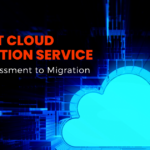Key Takeaways
- Managed IT services give SMEs predictable costs, scalability, and security.
- Outsourcing IT enables SMEs to focus on business growth instead of technical challenges.
- Cybersecurity, cloud adoption, and automation are top reasons SMEs choose managed IT.
- By 2025, SMEs without managed IT support risk higher downtime and competitive loss.
- Simple Logic IT delivers tailored managed IT services designed for SME growth and resilience.
Table of Contents
- Introduction: The Growing Role of IT in SMEs
- Understanding Managed IT Services
- Why Managed IT Services Are Critical for SME Growth in 2025 | Simple Logic IT
- Common IT Challenges SMEs Face Without Managed Services
- Industry Trends Shaping Managed IT Services in 2025
- Case Examples: How SMEs Achieve Growth with Managed IT
- How Simple Logic IT Supports SME Growth
- Comparison Table: In-House IT vs Managed IT Services for SMEs
- Choosing the Right Managed IT Partner for Your SME
- Final Thoughts
- Call to Action: Partner with Simple Logic IT
There was a time when IT was seen as an accessory for SMEs—nice to have, but not critical. Today, that idea feels outdated. Technology is now the backbone of every small and medium enterprise, shaping how they grow, compete, and serve their customers.
But here’s the reality: while large corporations can afford sprawling IT departments, most SMEs don’t have that luxury. Budgets are tight, expertise is limited, and the risks are only growing. One data breach, one prolonged downtime, one wrong IT decision—these can set a small business back years.
That’s why managed IT services are no longer a future consideration—they are a present necessity. As we step into 2025, with digital transformation accelerating and cyber threats rising, SMEs that fail to strengthen their IT foundations risk being left behind.
This blog unpacks why managed IT services are critical for SME growth in 2025 | Simple Logic IT, and how businesses can transform technology from a burden into a powerful growth driver.
Understanding Managed IT Services
Managed IT services involve outsourcing IT functions—such as infrastructure management, network monitoring, cybersecurity, and cloud operations—to a third-party provider. Instead of handling everything internally, SMEs partner with experts who manage their IT proactively, often through a subscription or pay-as-you-go model.
Key components typically include:
- Remote monitoring and management
- Cybersecurity and compliance solutions
- Cloud migration and support
- Backup and disaster recovery
- End-user support and helpdesk
- IT strategy and consulting
Why Managed IT Services Are Critical for SME Growth in 2025 | Simple Logic IT
Let’s dive into the main reasons SMEs in 2025 cannot ignore IT and managed services.
Cost Savings and Predictable IT Spending
One of the biggest concerns for SMEs is cost management. Hiring full-time IT teams, investing in infrastructure, and keeping up with updates can be overwhelming.
Managed IT services provide:
- Fixed, predictable monthly costs
- Avoidance of large upfront hardware/software expenses
- Scalable packages aligned with business needs
Cost Comparison (In-House vs Managed IT)
Expense Area | In-House IT Team | Managed IT Services |
Staffing Costs | High salaries & benefits | Fixed monthly fee |
Infrastructure | Large upfront investment | Included in package |
Upgrades & Licensing | Additional cost | Managed by provider |
Downtime Costs | Higher risk | Reduced with monitoring |
This makes budgeting easier and helps SMEs reinvest savings into business growth.
Strengthening Cybersecurity and Compliance
Cybersecurity is one of the top concerns for SMEs in 2025. A single data breach can damage reputation and result in huge financial penalties. Managed IT services deliver:
- Continuous monitoring for threats
- Advanced endpoint protection
- Compliance with GDPR, HIPAA, and other regulations
- Backup and disaster recovery strategies
By outsourcing cybersecurity to specialists, SMEs can protect their assets without hiring expensive internal teams.
Boosting Productivity and Minimizing Downtime
Downtime is one of the most expensive IT challenges. According to industry studies, downtime can cost SMEs thousands of dollars per hour.
Managed IT services minimize downtime by:
- Proactive monitoring to detect and resolve issues before they escalate
- 24/7 helpdesk support
- Automated patching and updates
- Rapid disaster recovery solutions
The result? Teams can focus on core business operations while IT runs seamlessly in the background.
Enabling Scalability and Flexibility
As SMEs grow, so do their IT needs. Traditional in-house setups often struggle to keep pace. Managed IT services provide:
- On-demand scalability for storage, bandwidth, and applications
- Flexible solutions that adapt to growth and seasonal spikes
- Cloud-based platforms to support remote work and global expansion
This scalability is essential for SMEs aiming for sustainable growth in 2025.
Access to the Latest Technology and Expertise
SMEs often fall behind on adopting new technology because of cost and lack of expertise. Managed IT providers like Simple Logic IT bring:
- Access to enterprise-level tools and platforms
- Expert teams across networking, security, and cloud services
- Proactive recommendations for IT improvements
- AI-driven automation and analytics
This ensures SMEs stay competitive without large R&D budgets.
Common IT Challenges SMEs Face Without Managed Services
When SMEs rely only on internal IT resources, they face recurring obstacles that restrict growth. Leading analyst firms and industry reports highlight the following challenges:
Limited Internal IT Expertise
- SMEs often lack staff with deep technical skills in cybersecurity, compliance, or modern IT architectures. According to IDC, a global “IT skills crisis” is expected to affect over 90% of organizations by 2026, leading to losses in productivity, innovation and revenue. IDC
- A systematic review of SME cybersecurity (2017-2023) found that lack of cybersecurity literacy, awareness of risks, and financial constraints are major barriers for SMEs becoming resilient. (arXiv)
Higher Vulnerability to Cyberattacks
- Without professional monitoring, SMEs are frequent targets for phishing, ransomware, and insider threats.
- Statista reports that 43% of global cyberattacks now target SMEs (Statista, 2024).
- Fortinet adds that 72% of businesses saw increased cyber risk, with ransomware leading the threats .
Unpredictable IT Costs
- In-house IT often results in sudden hardware failures, licensing renewals, or costly downtime]
- Carbonite/IDC research shows a single downtime event costs SMEs between USD 82,200 and USD 256,000 (Data Foundry).
- Unity Connect t estimates downtime at USD 137–USD 427 per minute for SMEs.
Slow Adoption of New Technologies
Without external IT support, SMEs delay cloud, automation, or collaboration tools, missing efficiency gains.
Gartner’s Technology Adoption Roadmaps show where organizations are in adopting new technologies and the risks/benefits of doing so.
Forrester ‘s The State of Digital Workplace Services, 2024 report details how companies are increasingly investing in digital workplace tools, automation, and user experience improvements.
Frequent Downtime and Reduced Productivity
- Poor monitoring and outdated systems increase outages that damage productivity and customer trust.
- The (Uptime Institute) reports that 60% of organizations now face downtime costs over USD 100,000 per incident .
Compliance and Regulatory Risks
- Regulations like GDPR, HIPAA, or PCI DSS demand strict IT processes that SMEs often can’t maintain alone.
- IBM’s Cost of a Data Breach Report 2024 found the average breach cost in healthcare rose to USD 10.93 million (IBM).
- Even smaller fines combined with legal costs can strain SME finances and damage credibility.
Industry Trends Shaping Managed IT Services in 2025
Recent market data confirms that managed IT services are not just growing—they are transforming how SMEs manage risk, productivity, and cost. Providers must adapt to several evolving trends:
Market Expansion & Investment:
The global managed services market is growing rapidly. For example, in 2024 it was about USD 335.37 billion, and forecasts show it reaching USD 731.08 billion by 2030, with a compound annual growth rate of roughly 14.1%. Grand View Research
Cloud & Hybrid Models Becoming Mainstream:
Hybrid deployments are rising in popularity—combining cloud and on-premises systems to balance flexibility, cost, and control. Cloud-hosted solutions continue to dominate in many developed regions. Mordor Intelligence+1
Security & Compliance Take Priority:
Managed security services now represent nearly a quarter of revenue in some regions. SMEs are moving from reactive to proactive strategies—investing in continuous monitoring, compliance measures, and threat prevention. Mordor Intelligence+2Expert Insights+2
Support for Remote Work & Mobile Devices:
With hybrid and remote work models becoming standard, there’s rising demand for mobility management, secure remote access, and reliable support for devices outside traditional office setups. Gartner’s reports on managed mobility show user experience and operational control are now central to these services. sakon.com
Automation & Predictive Tools:
Tools that alert to issues before they become failures, automate routine maintenance (patching, backups), and use analytics to anticipate needs are gaining adoption. These tools reduce downtime and relieve the burden on small IT teams. Expert Insights+1
SME Adoption Rates & Regional Growth:
SMEs in North America are forecasted to grow at double-digit CAGRs in their use of managed services. Meanwhile, Asia-Pacific is becoming one of the fastest growing regions for these services, due to increasing technology investments.
How Simple Logic IT Helps SMEs Grow
Running an SME is challenging enough—managing IT shouldn’t make it harder. Simple Logic IT helps businesses stay ahead with smart, reliable IT support. Here’s how we make it easier for SMEs to succeed:
IT Solutions That Fit Your Business
- Every business has unique needs and rhythms.
- We assess your challenges and design solutions that remove obstacles and keep you moving forward.
- Every business has unique needs and rhythms.
24/7 Monitoring and Support
- Systems are watched around the clock.
- Problems are caught and resolved before they affect your business operations.
- Systems are watched around the clock.
Cloud & Infrastructure That Works for You
- We help SMEs move to the cloud and manage operations efficiently.
- IT systems scale easily with your business growth and changing needs.
- We help SMEs move to the cloud and manage operations efficiently.
Keeping Your Data Safe
- Protection against malware, phishing, and ransomware.
- Firewalls, endpoint security, and compliance processes keep your data secure.
- Protection against malware, phishing, and ransomware.
Making Everyday Work Easier
- Repetitive tasks like updates, backups, and monitoring are handled automatically.
- Your team can focus on tasks that directly drive growth.
- Repetitive tasks like updates, backups, and monitoring are handled automatically.
Why SMEs Stick With Us
- Stable costs: Predictable monthly fees, no surprises.
- Growth-ready systems: IT solutions that expand with your business.
- Real expertise: Experienced team covering networks, security, and more.
- Guidance you can trust: Clear, practical advice without jargon.
- Stable costs: Predictable monthly fees, no surprises.
Overall Benefit
- Simple Logic IT helps your business keep moving forward, even in challenging times.
- You can focus on your goals, knowing IT is reliably managed in the background
- Simple Logic IT helps your business keep moving forward, even in challenging times.
In-House IT vs Managed IT Services for SMEs
Feature/Factor | In-House IT | Managed IT Services |
Cost | High & variable | Predictable monthly |
Expertise | Limited to staff hired | Broad expert team |
Scalability | Slow, costly | Rapid, flexible |
Cybersecurity | Basic protection | Advanced monitoring |
Support Availability | Business hours only | 24/7 support |
Choosing the Right Managed IT Partner for Your SME
When selecting a provider, SMEs should evaluate:
- Experience with SMEs
- Range of services (cloud, security, automation)
- Scalability of solutions
- Transparent pricing models
- Client testimonials and case studies
Simple Logic IT checks all these boxes, making us a trusted partner for SMEs in 2025.
Conclusion
The business landscape in 2025 demands agility, security, and innovation. For SMEs, the stakes are higher than ever. Relying solely on small in-house teams or outdated IT setups can expose businesses to risks, delays, and mounting costs. That’s why managed IT services are critical for SME growth in 2025 | Simple Logic IT.
With managed IT, SMEs unlock predictable costs, enterprise-grade security, advanced cloud solutions, and round-the-clock support—all without stretching internal teams too thin. Technology becomes less of a challenge and more of a growth enabler.
At Simple Logic IT, our mission is clear: empower SMEs with IT strategies that fuel success, resilience, and scalability. Whether it’s safeguarding data, modernising infrastructure, or ensuring uninterrupted business operations, we act as a partner invested in your growth story.




